There can be your advertisement
300x150
Floor Tile for Hallway: Design Ideas, Selection Tips and Installation
Such materials must meet certain requirements, particularly in terms of their durability and ability to withstand any external impact. The ideal option is floor tile for the hallway, which is distinguished from other finishing materials by its practicality and resistance to aggressive environments.
Pros and Cons of Tile in the Hallway
Tile for the hallway has a wide range of advantages:
maximum service life;
resistance to wet and chemical environments;
attractive appearance;
ability to withstand high loads and mechanical impact;
ecological safety (floor heating can be installed under tile, as the finishing material does not emit toxic vapors even when heated) and others.
The disadvantages of hallway tile can only be listed in a few points:
- relatively high cost (the highest prices are set for ceramic tiles from internationally renowned brands);
- need to involve specialists in the installation process;
- significant weight.

Choosing Tile
Every owner of a country house or city apartment, who independently handles the procurement of finishing materials, should consider the following parameters when selecting floor tile for the hallway:
level of wear resistance;
sizes;
color palette;
texture;
water resistance level;
manufacturing method;
resistance to chemical environments;
grade;
hardness and others.
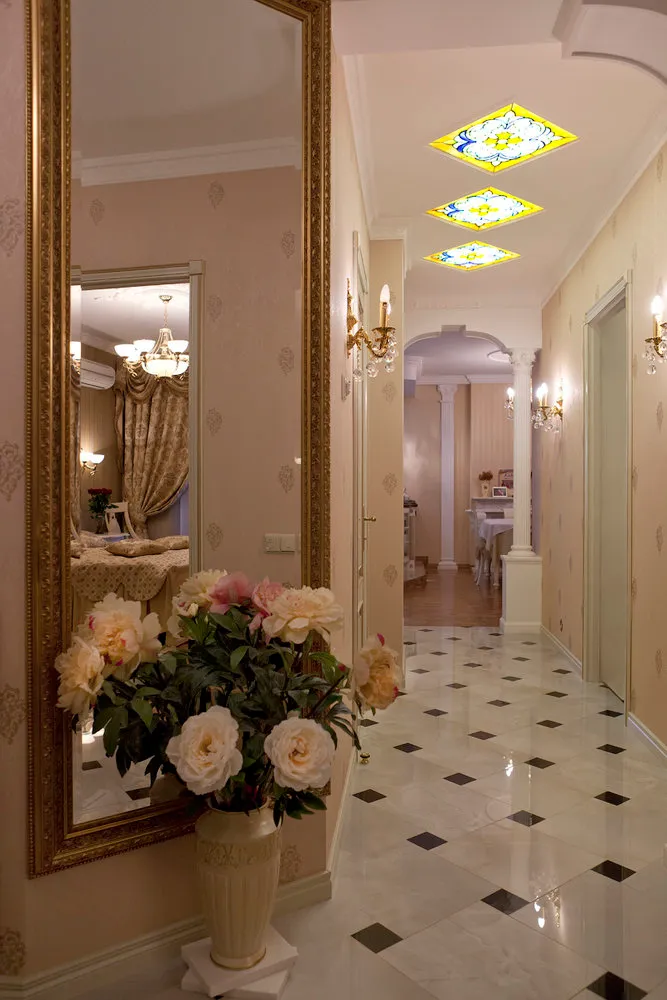
Size
When choosing the size of tile for the floor in a hallway, property owners should consider the following points:
larger squares can be laid much faster, which shortens the time required for cladding;
small tiles will result in more joints on the floor surface.

Color
When choosing tile for the floor in a hallway, owners of city or country properties should pay special attention to the color palette. Professionals' advice will help in this regard:
Tile for the floor in a hallway should harmonize with the interior design.
If the space to be clad is small in size, light shades should be preferred.
Dark tile on the floor in a hallway will be an ideal solution for spacious rooms.
Many people prefer the classic color combination of tile for a hallway floor – black and white. However, owners of country houses and city apartments should keep in mind one point. Such flooring will be very marked, so regular cleaning will be required.
Designers recommend buying tile for the kitchen and hallway floor in beige, brown, or gray tones.
Regarding practicality, scratches and dirt will be less noticeable on a matte surface. If the hallway floor is glossy, the room owner will have to constantly clean and polish it to maintain its shine.
For large rooms, small-sized ceramic tile with a repeating pattern on the surface can be purchased. In this case, property owners will be able to make the space more cozy.

Texture
Should have a rough surface to minimize the risk of injuries from falls. Currently, a wide range of tiles is available on the domestic construction market. Owners of country and city properties can select tile for the hallway that imitates natural materials, such as brick or stone.
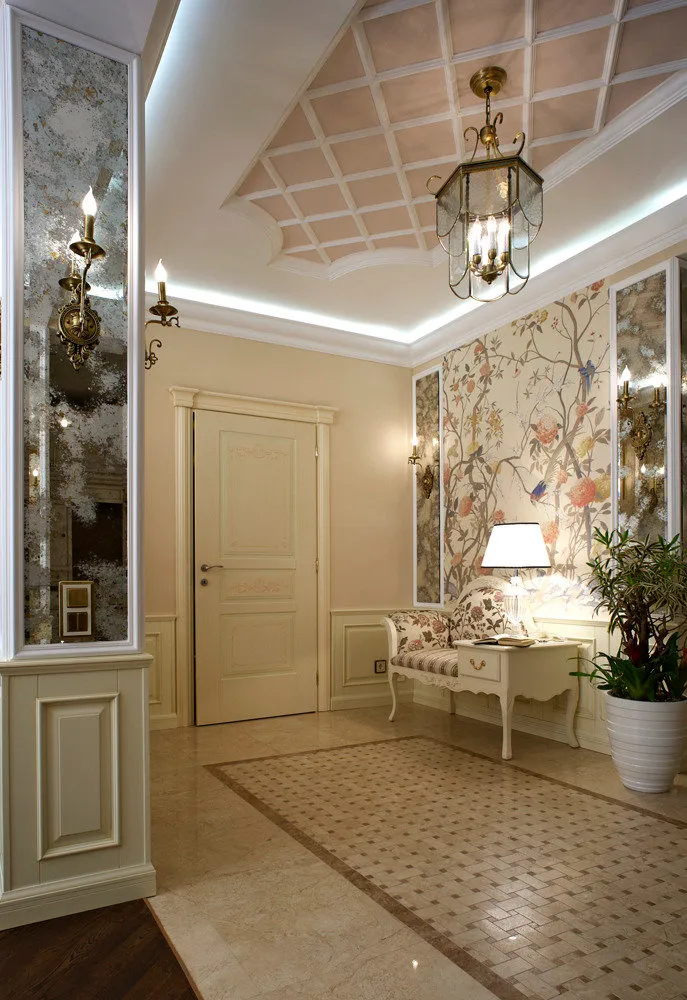
Technical Specifications
When making their choice, property owners must take into account the technical specifications of the tile. Particular attention should be paid to the anti-slip level, which should vary between R10 and R11. The following technical parameters are also considered very important for hallway tile:
the water resistance level of the hallway tile should exceed 3.0%;
the wear resistance level should exceed or be within 3 PEI;
the hallway tile should be of the first grade;
the friction coefficient should not exceed 0.75%.
Tile in the hallway can come in various sizes, allowing property owners of city and country homes to easily select tiles according to their personal preferences. Specialists recommend purchasing tile for the hallway made either in foreign countries or at manufacturing facilities, as the quality of domestic finishing materials today does not lag behind European standards.
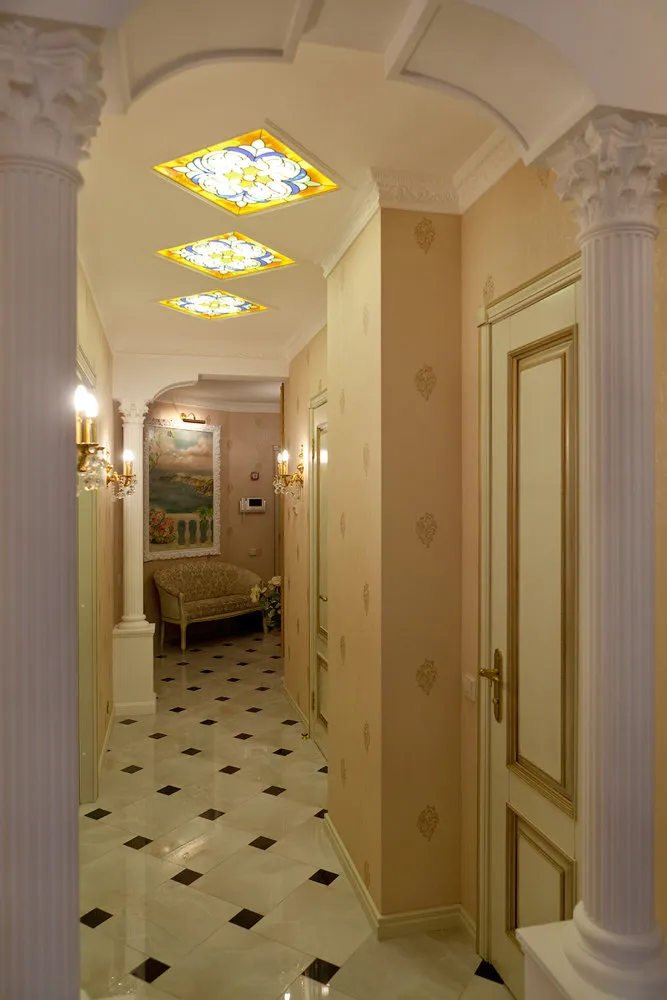
Style
Should harmonize with the overall interior of the room and serve as its complement, not as an element that stands out from the design context. Specialists recommend purchasing tile for hallways with a surface imitating natural stone. Such flooring will look very stylish in any interior, whether classic or rustic.
Regarding rooms decorated in a modern style, designers recommend purchasing tiles with patterns and various designs. Meanwhile, minimalist trends prefer monochromatic floor surfaces. However, it should also be noted that a winning option would be hallway tile made to resemble natural wood.

Tile Installation Methods
If the owner of a city apartment or country cottage has experience or theoretical knowledge in construction, they can clad the hallway floor with ceramic tiles independently. After purchasing the tile for the hallway floor, tools and consumables must be prepared: a construction level, trowels, hammers, a construction mixer, mortars, and others.
Before laying the tiles, the floor surface must be prepared. This involves removing the old cladding and leveling the hallway floor using special construction mortars or cement mortar. Before laying, a layout must be performed by placing the tiles on the hallway floor to determine from which corner to start the installation.

Design: Marion Studio
A special adhesive mixture must be applied to the prepared floor surface and the inner side of the tiles, after which the tiles are laid and leveled using a construction level. People can also prepare a cement mortar independently, following the appropriate proportions. To ensure even joints between tiles, crossbars should be used.
If it is found during installation that one side is slightly higher, the tiles can be leveled using a rubber mallet with very careful taps. Once all the tiles in the hallway are laid, they should be left for several days to allow the adhesive mixture to fully cure. During this time, one must not walk on the floor covering, otherwise it will be compressed and will not be perfectly flat. Specialists recommend moistening the joints with water during the curing of the adhesive mixture to prevent cracks from forming.
A few days after completing the installation of ceramic tiles on the hallway floor, all joints must be grouted. For this purpose, special grout with a matching tone should be used and applied using a special rubber spatula.
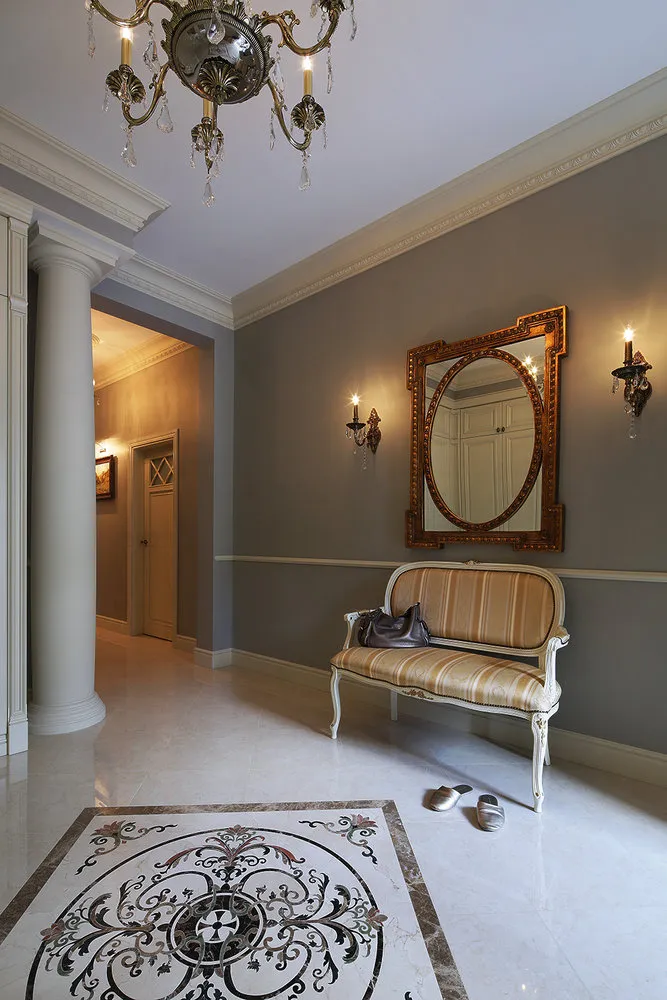
Ceramic Granite in the Hallway
The floor in a hallway should be clad with a material that can withstand the harmful effects of moisture for an extended period and is resistant to wear. Ceramic granite has such characteristics, maintaining its original appearance and color throughout its entire service life. It should also be noted that one of the important properties of this finishing material is almost zero water absorption.
Ceramic granite tile has a rough surface. On one hand, this quality should be viewed as an advantage, preventing the risk of injury to household members. On the other hand, a rough surface will bring additional difficulties for its owners, as they will not find it easy to maintain ceramic granite tiles. However, the solution is to use special abrasive brushes and strong cleaning agents to remove dirt from the floor covering.
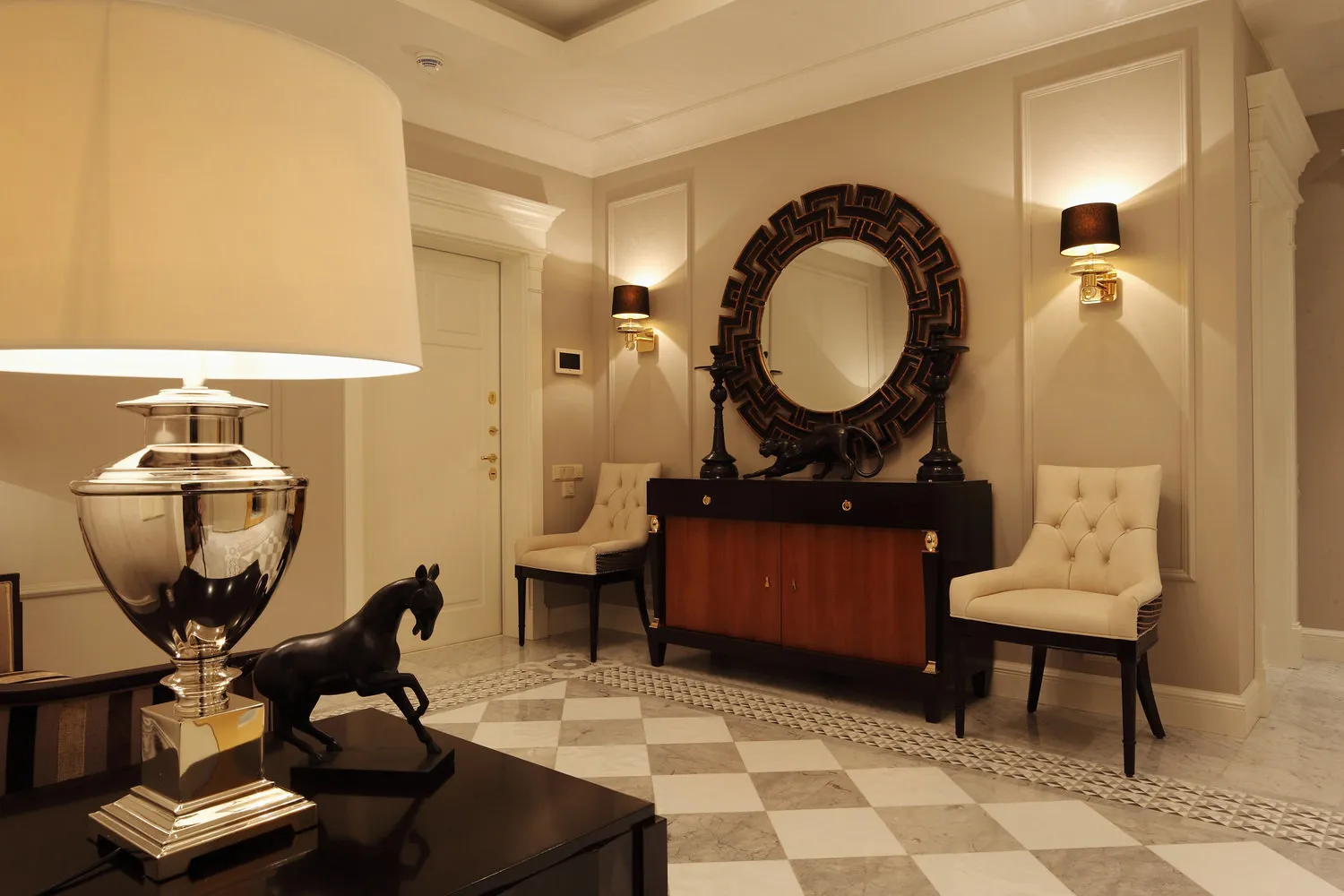
Combined Floors in the Hallway
Today, in many apartments and houses, owners use several different materials with varying textures and structures during the decorative cladding of floor zones. For example, a popular combination is ceramic tile and laminate or linoleum. This way, property owners of country and city homes can create zones, especially if they have a hallway combined with the living room or kitchen.
It should be noted that by combining several materials, people can create either a monolithic floor covering or elevated areas – platforms. However, specialists do not recommend making them too high, as this increases the risk of injuries. A height of 3 to 5 cm is quite sufficient for a mini-platform in the hallway. The advantage of a mini-platform in the hallway will be the clear demarcation of a specific area, which neither household members nor guests can cross without removing their shoes. Thus, property owners will be able to maintain cleanliness in their homes.
When combining ceramic tile with another finishing material, people can create either a straight or a patterned connection. In the first case, a special floor edging can be used, which is fixed to the floor surface using fastening elements. The connection between two finishing materials can also be patterned. In this case, people must perform highly accurate calculations to ensure that the final result is not disappointing.
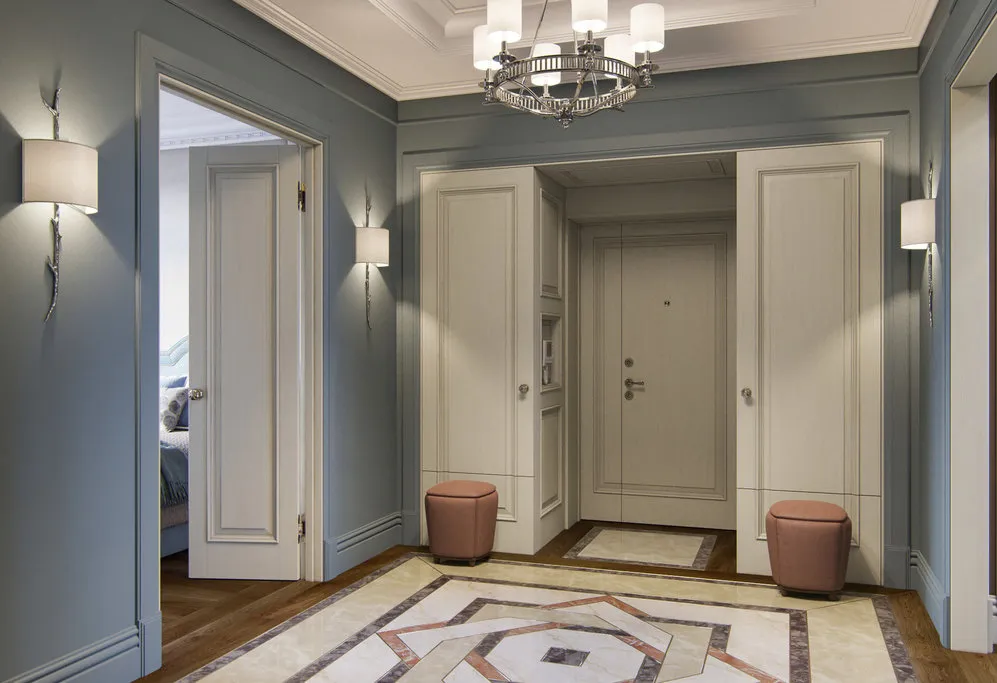
Design: Margarita Melnikova, Tatiana Nikitina, Marion Studio
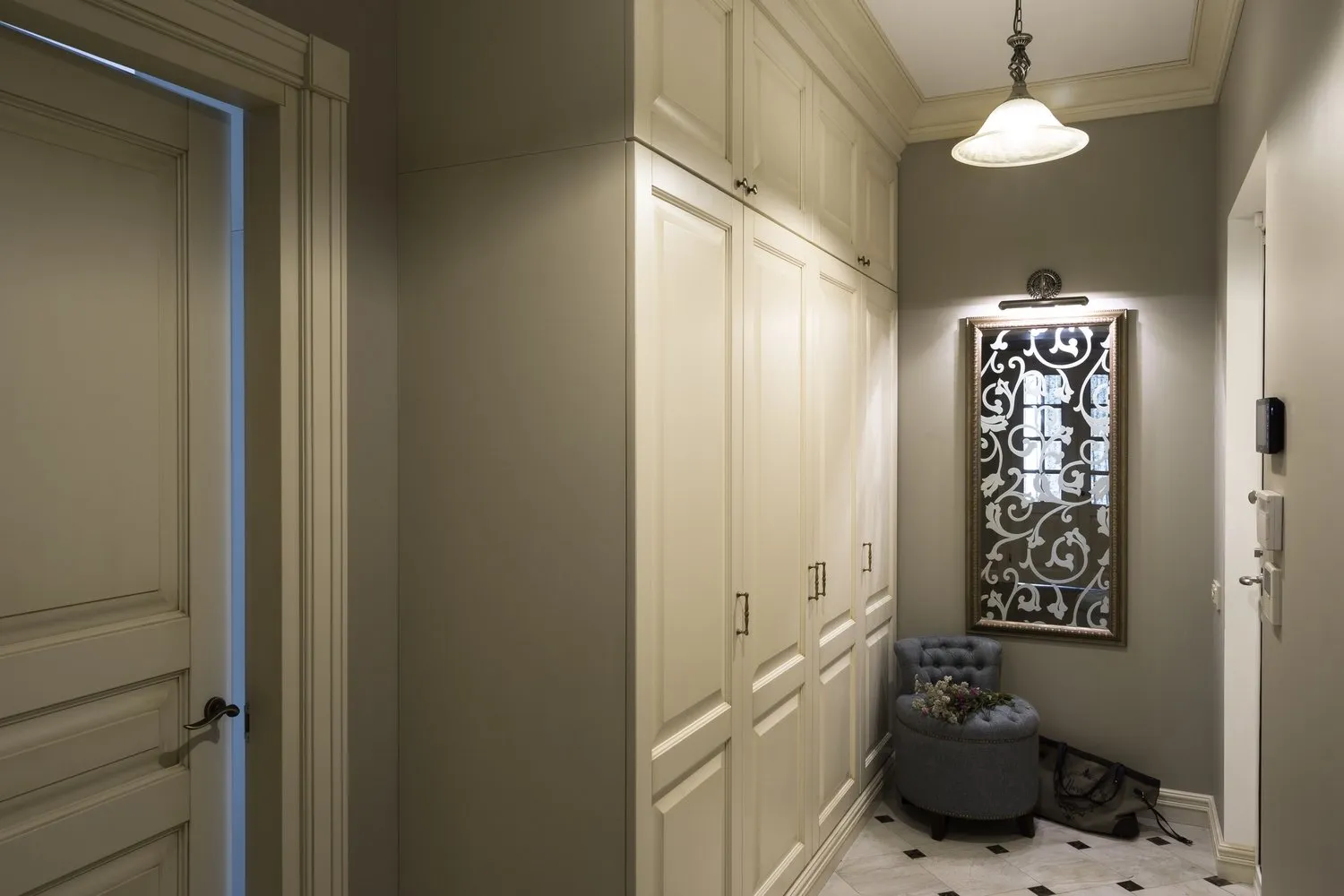




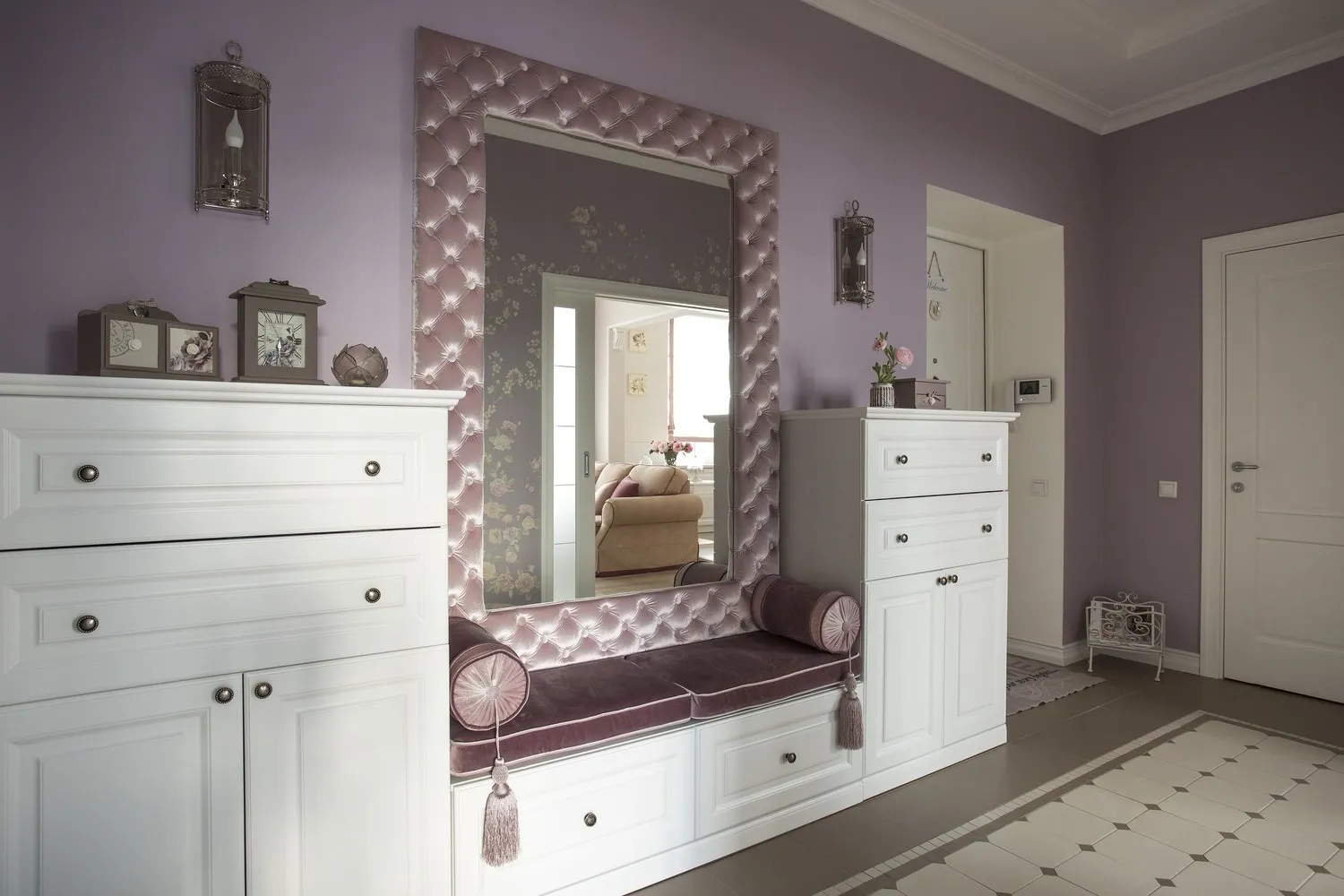
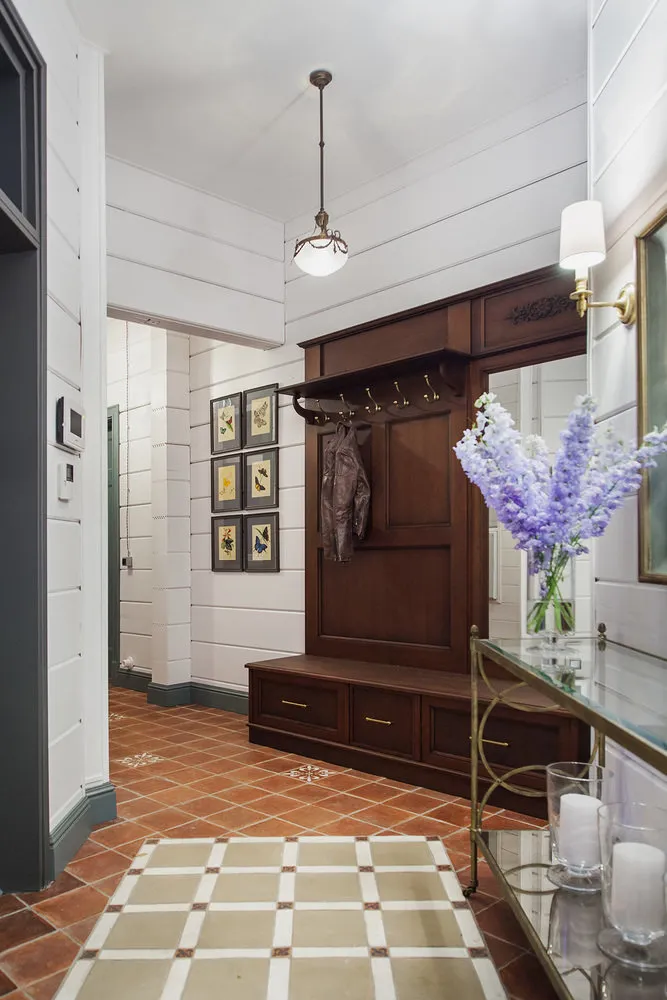
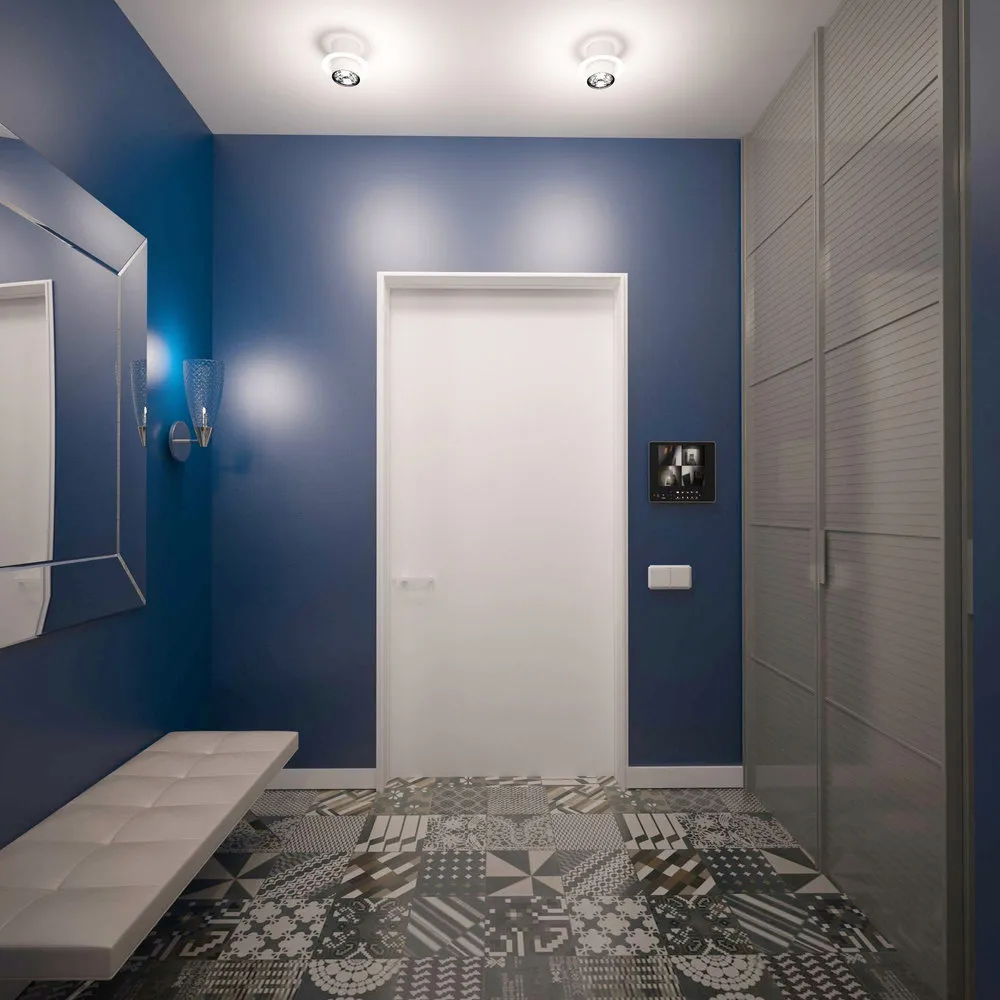
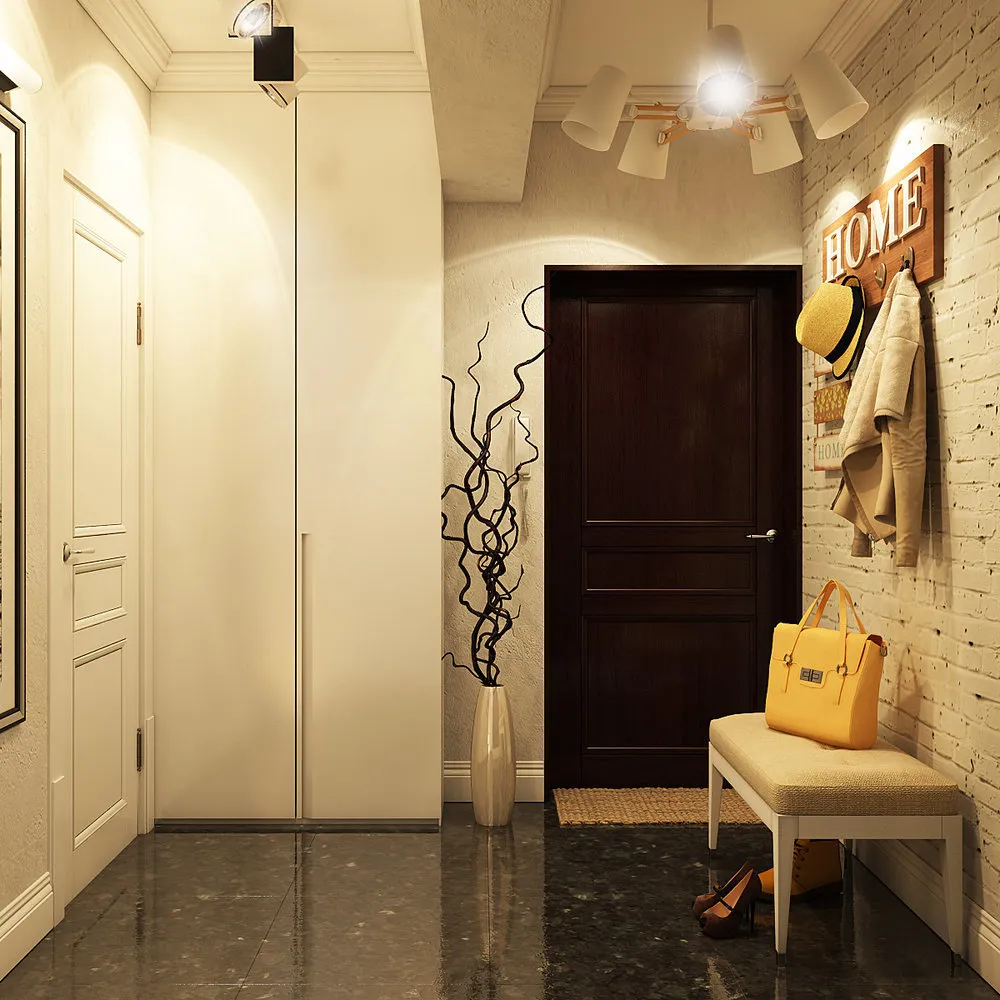
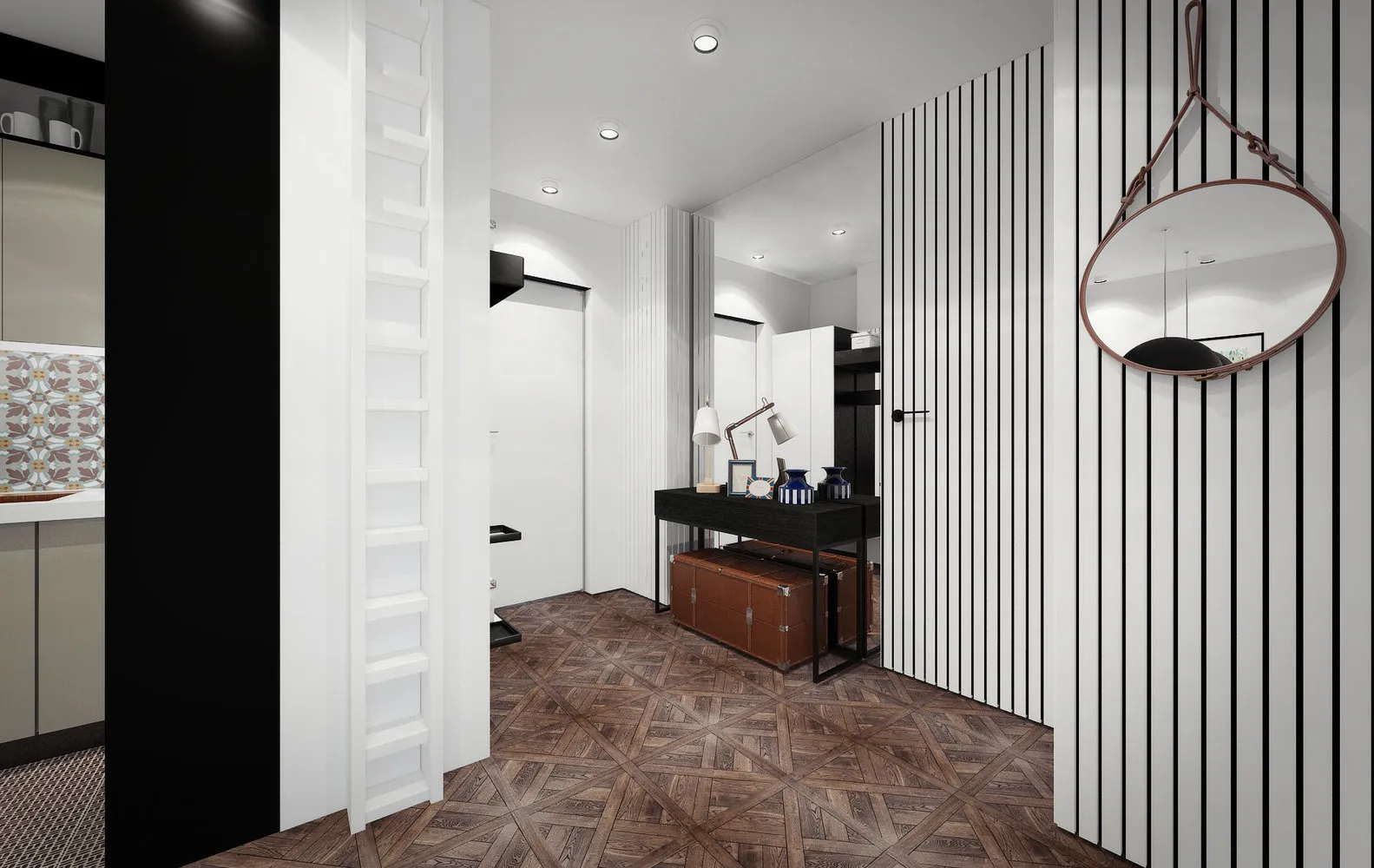

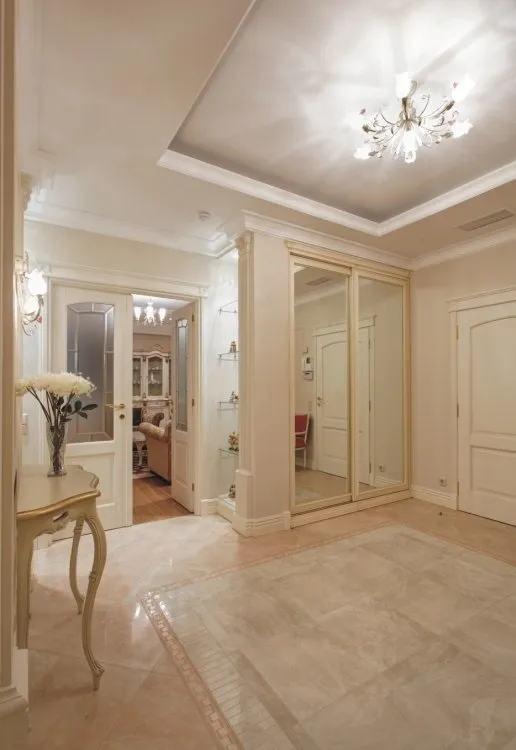
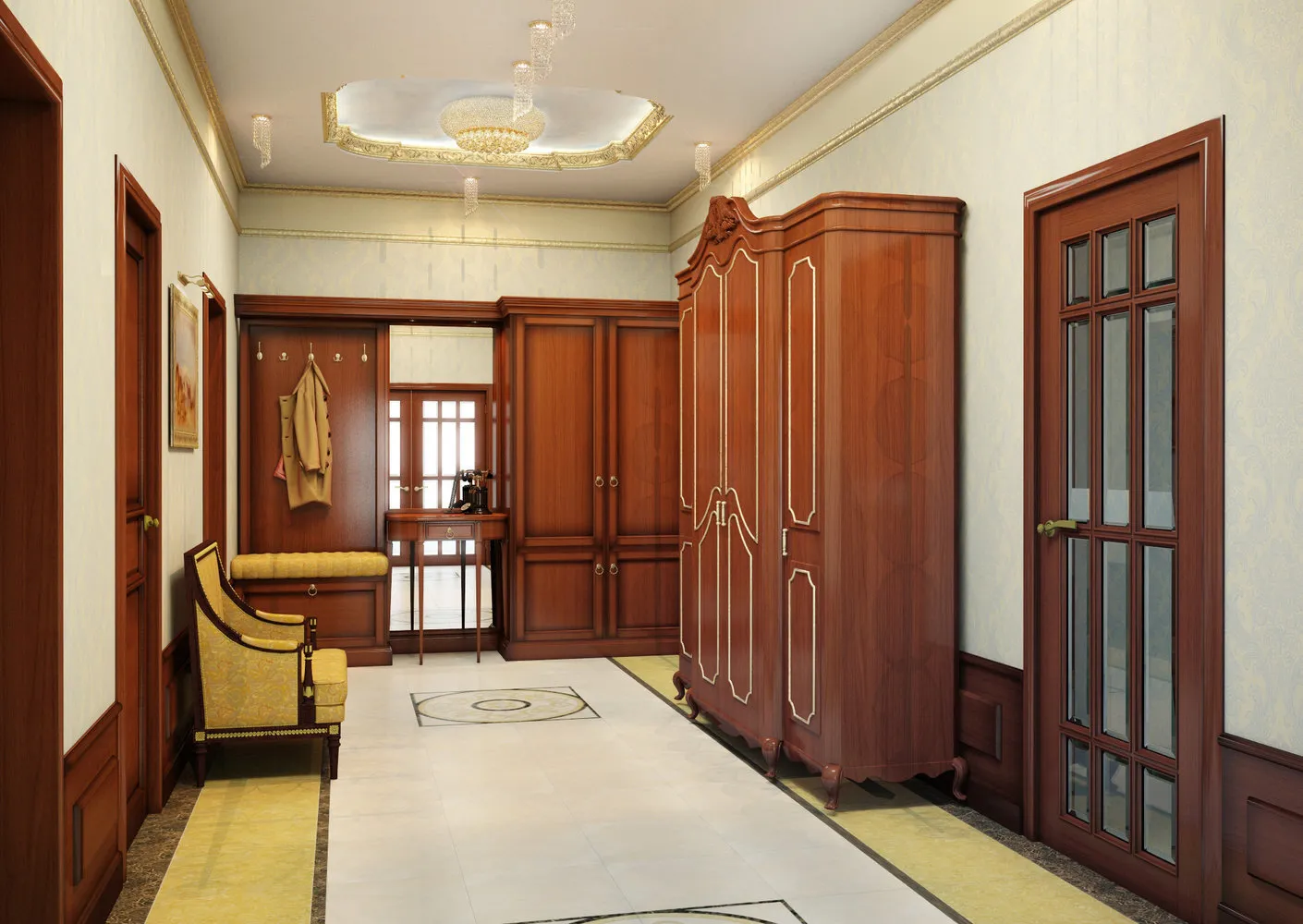
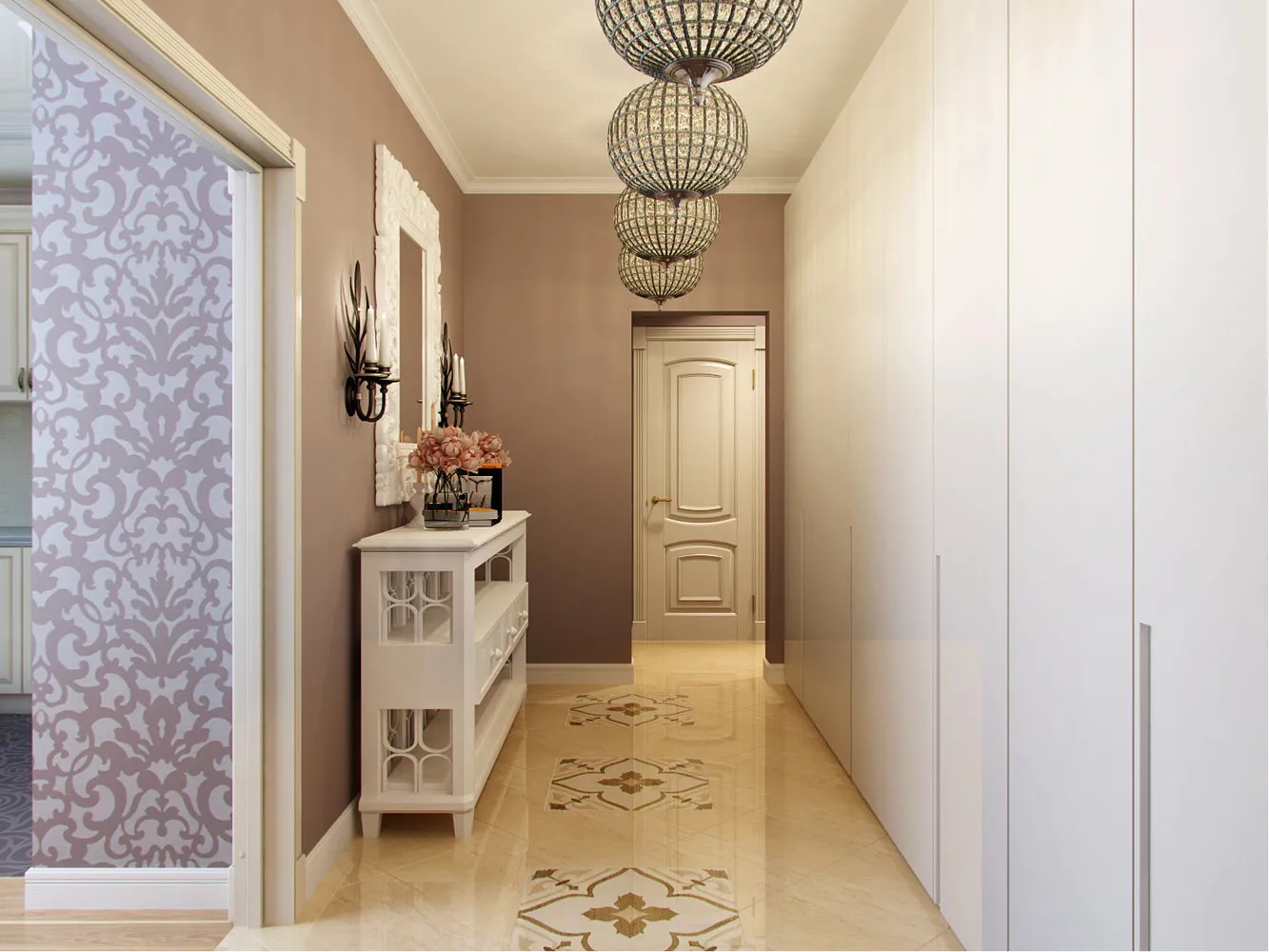


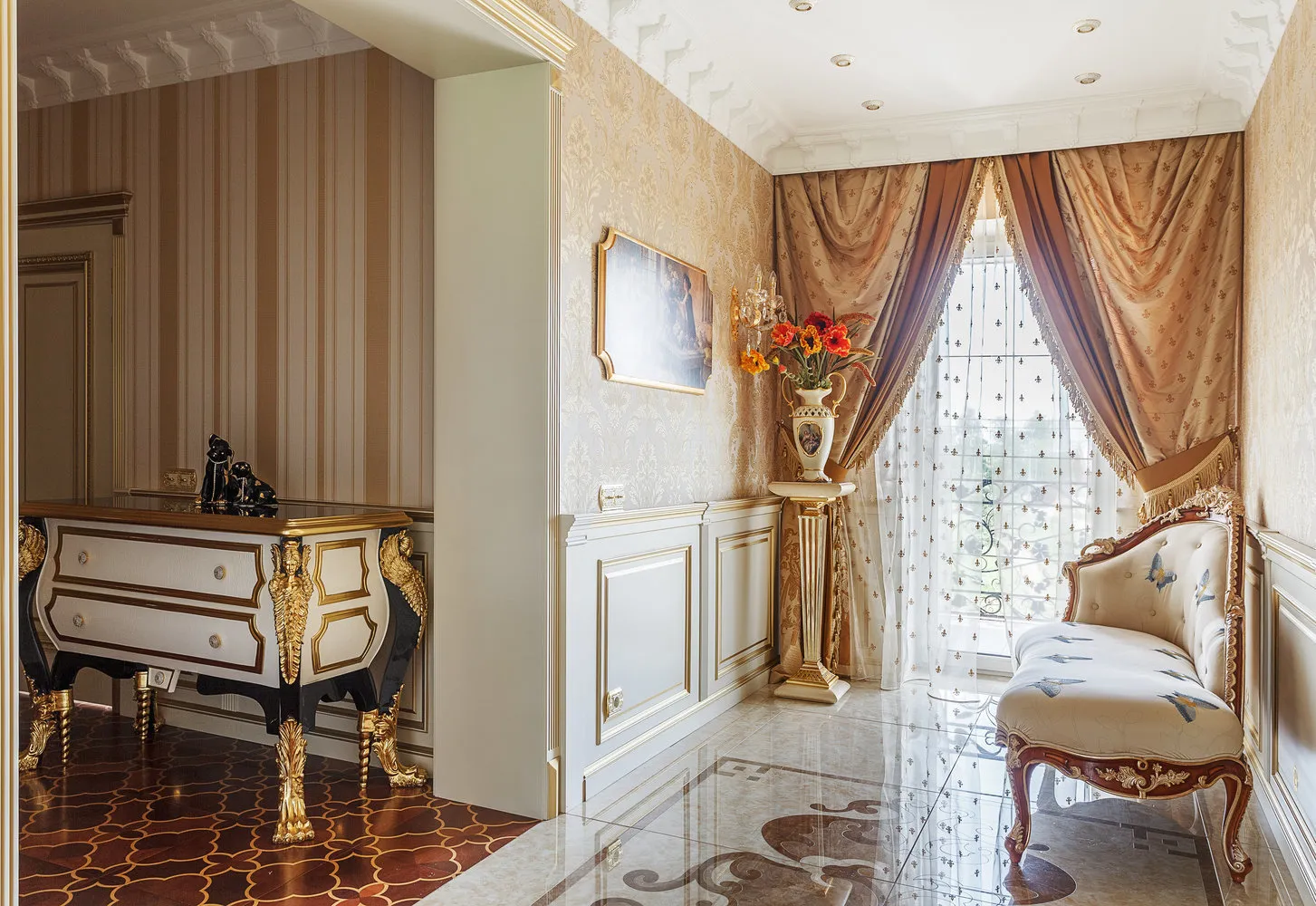
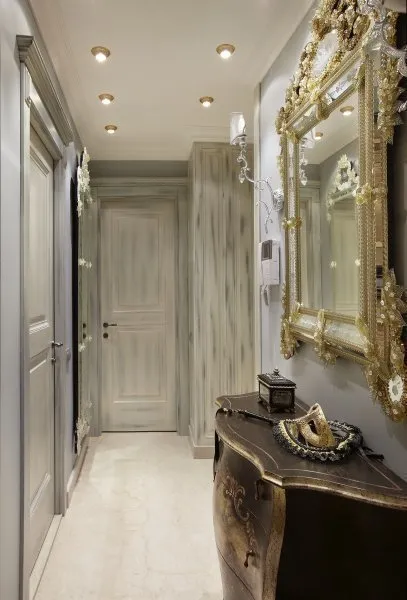
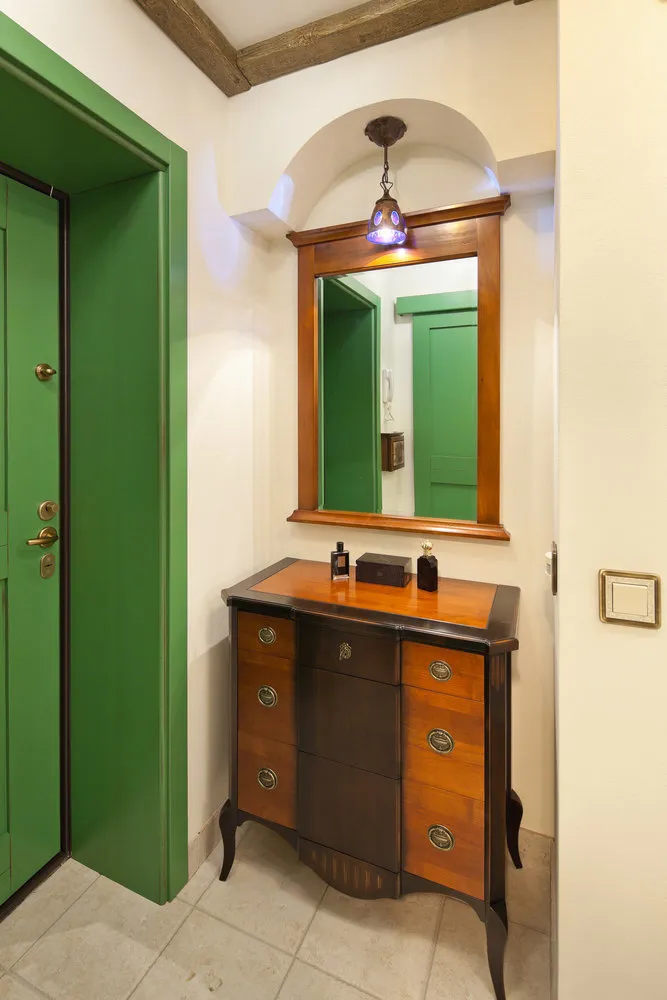
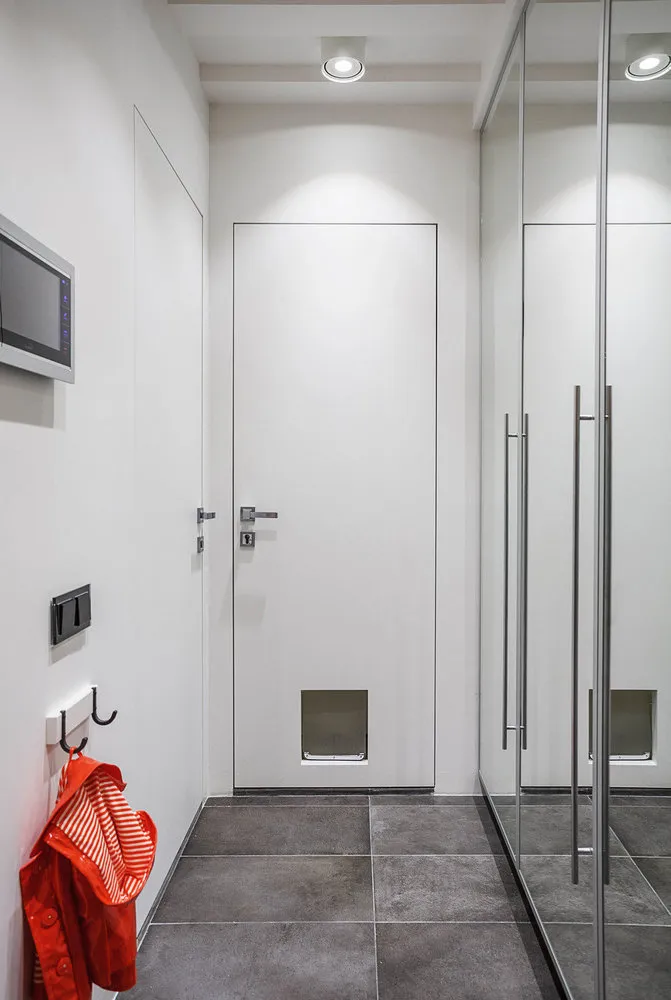

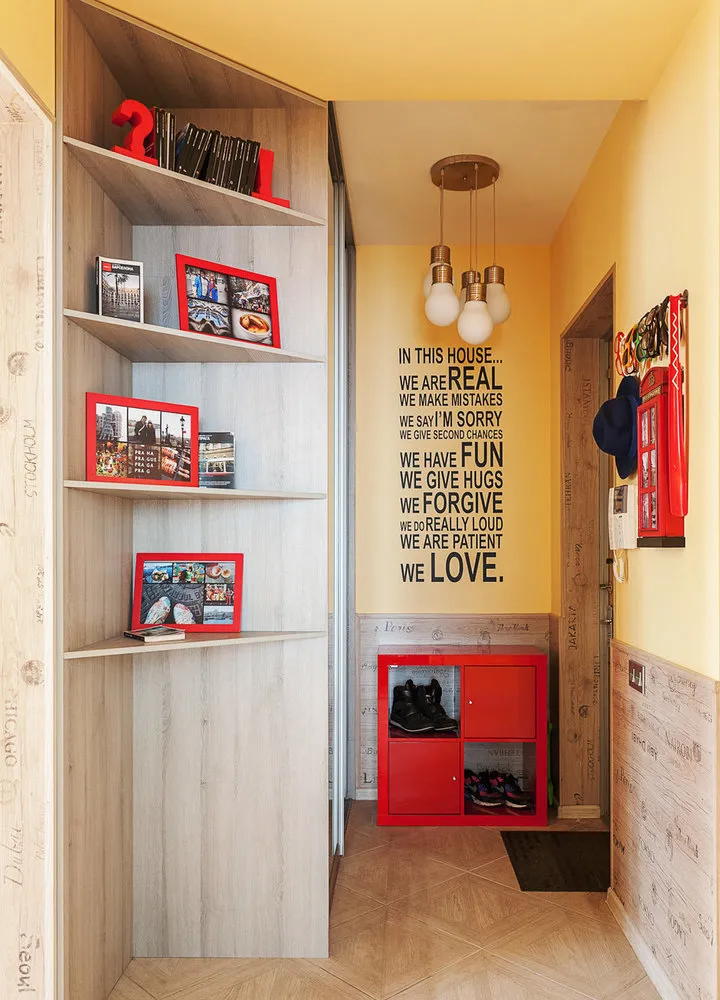

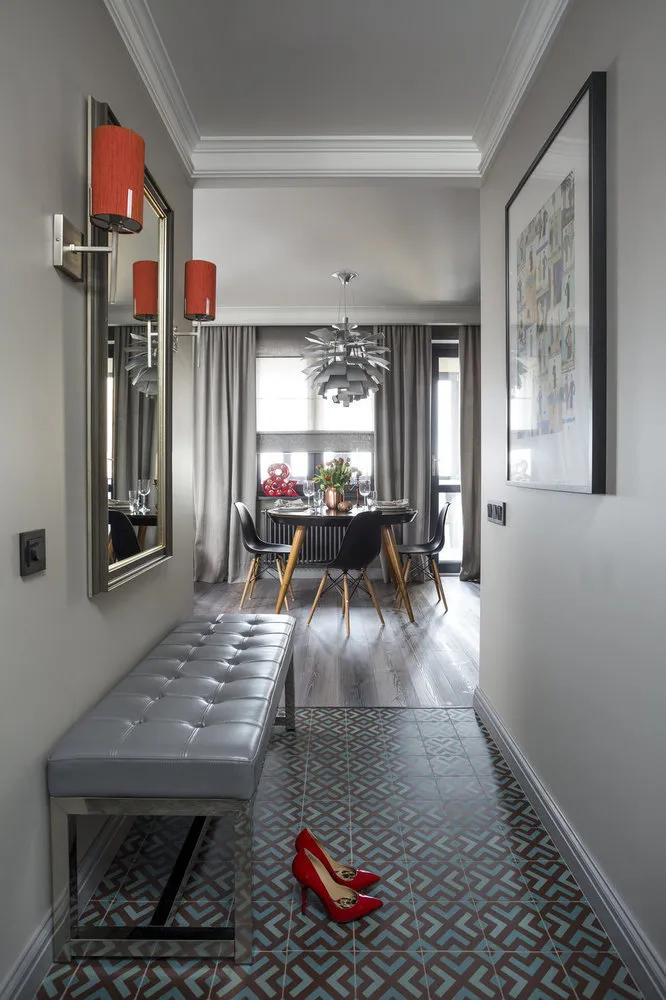

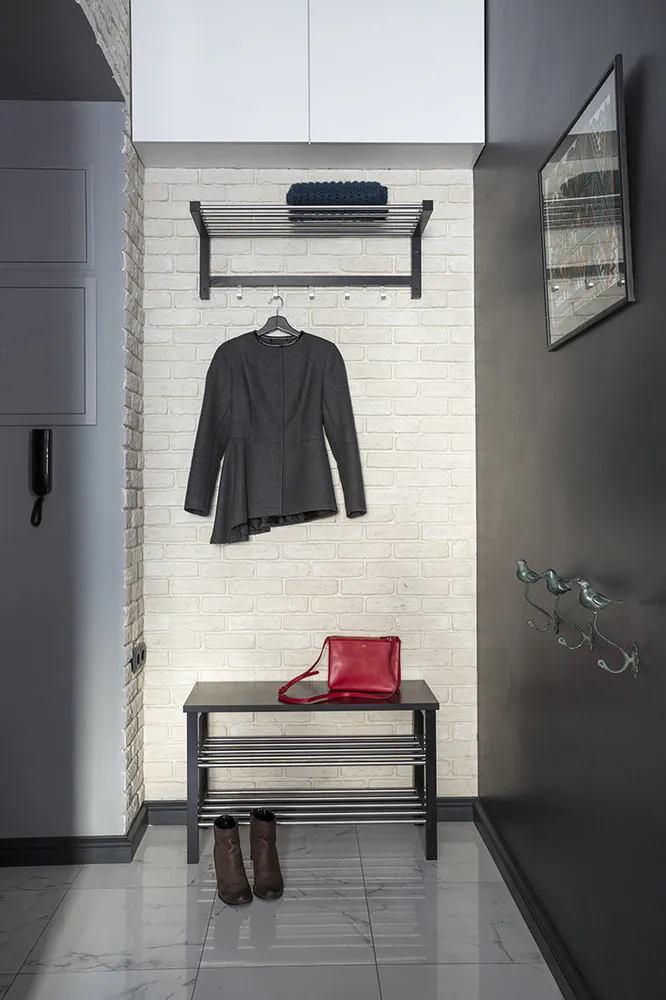
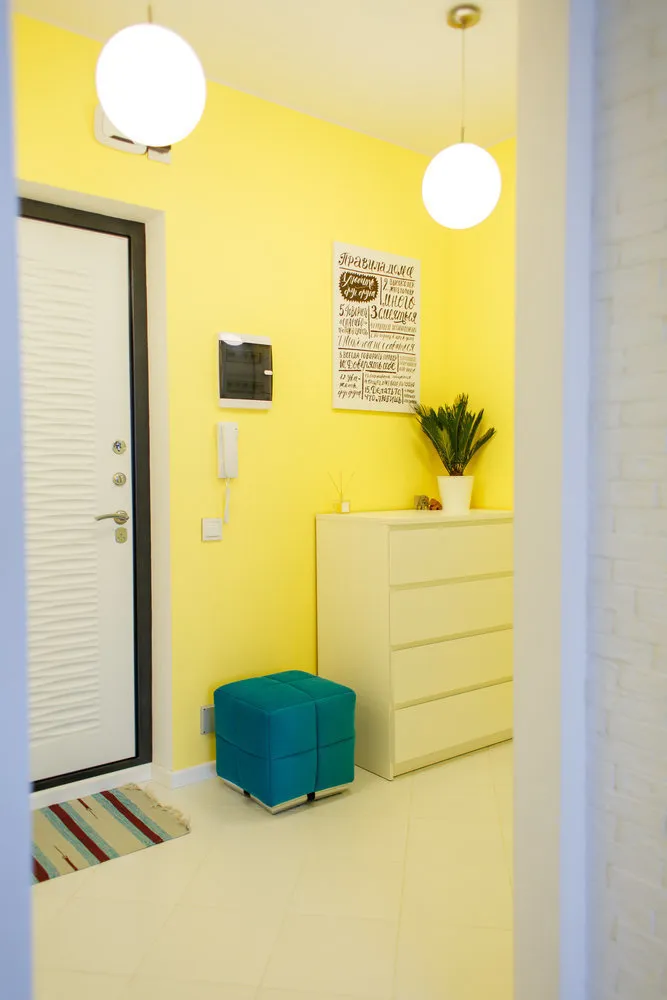
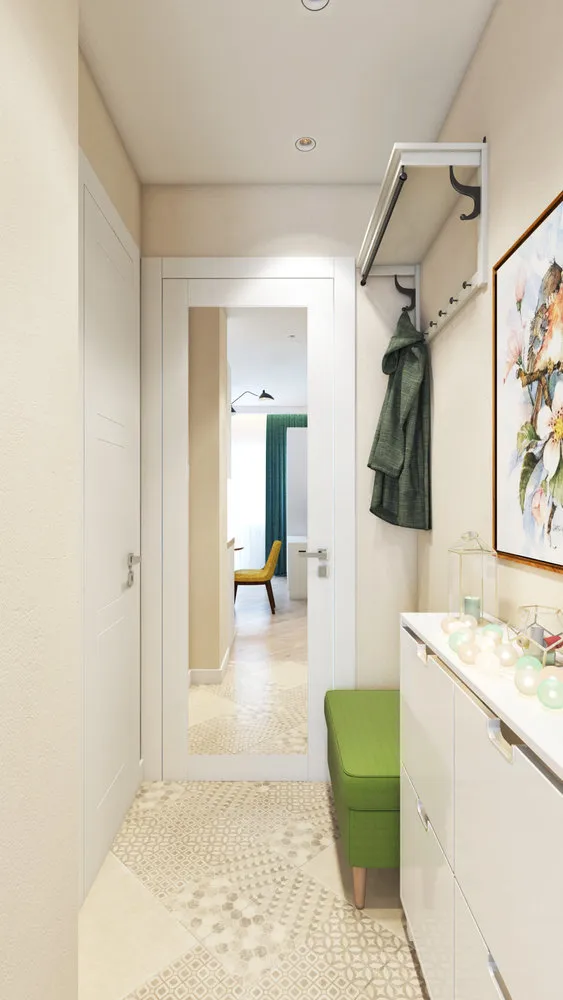
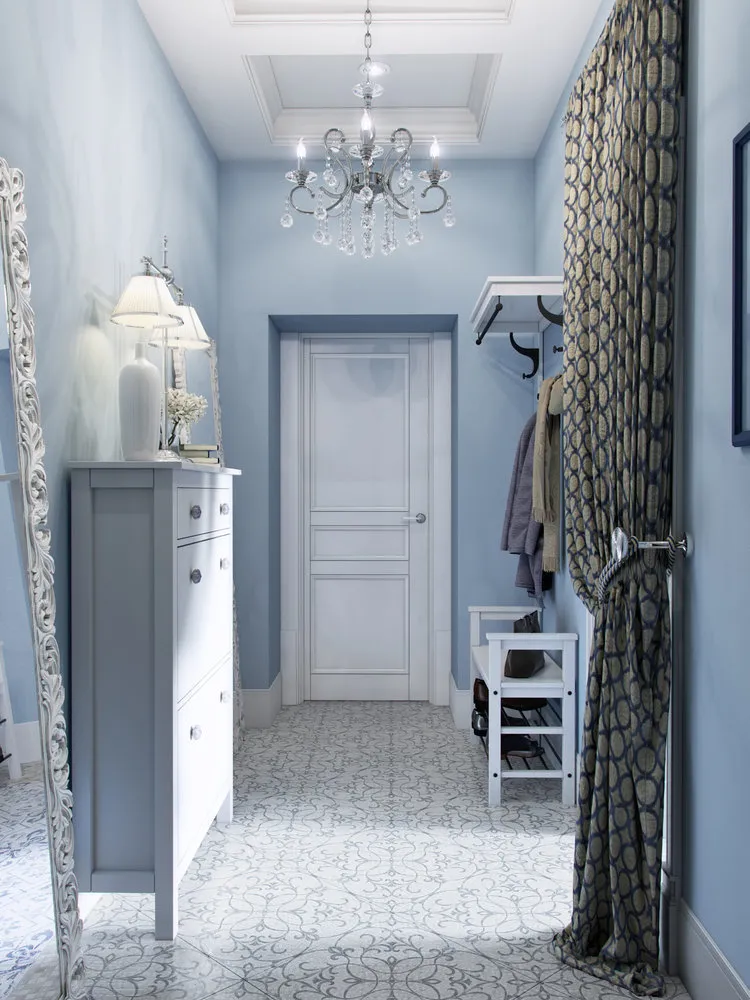
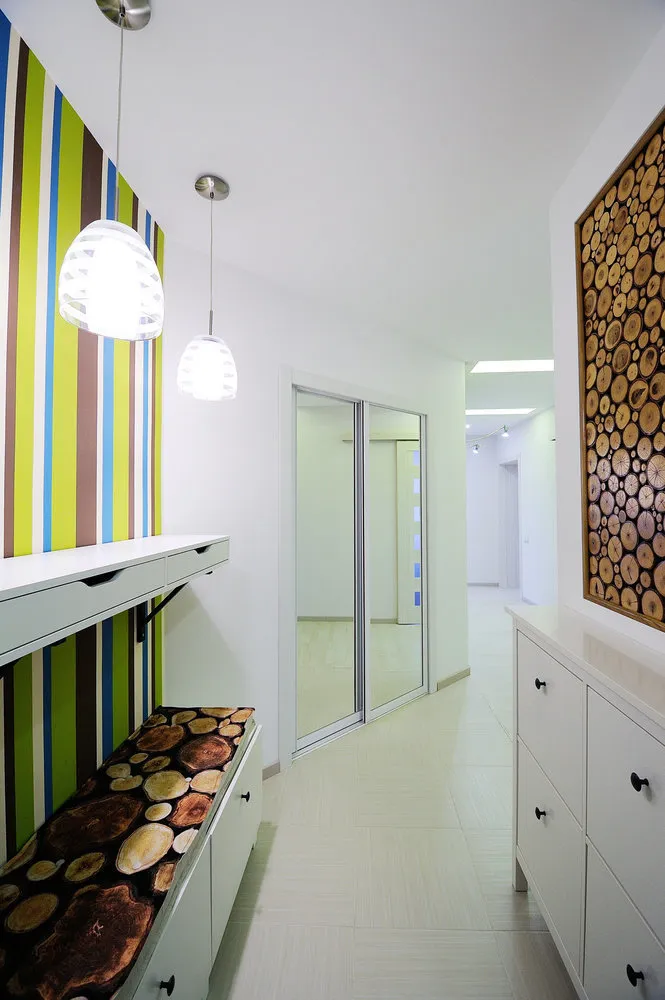
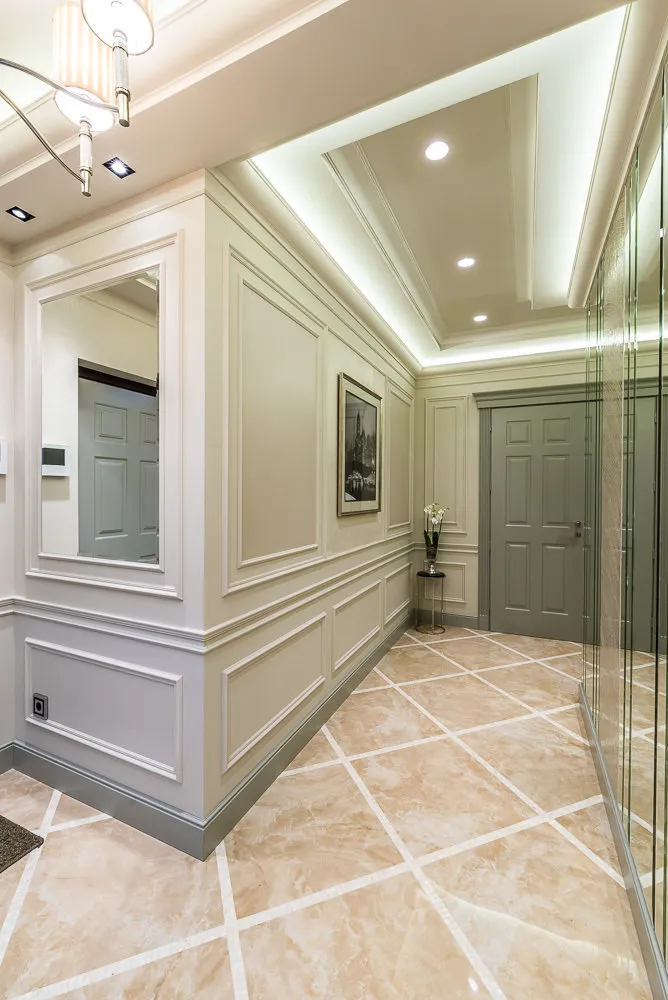


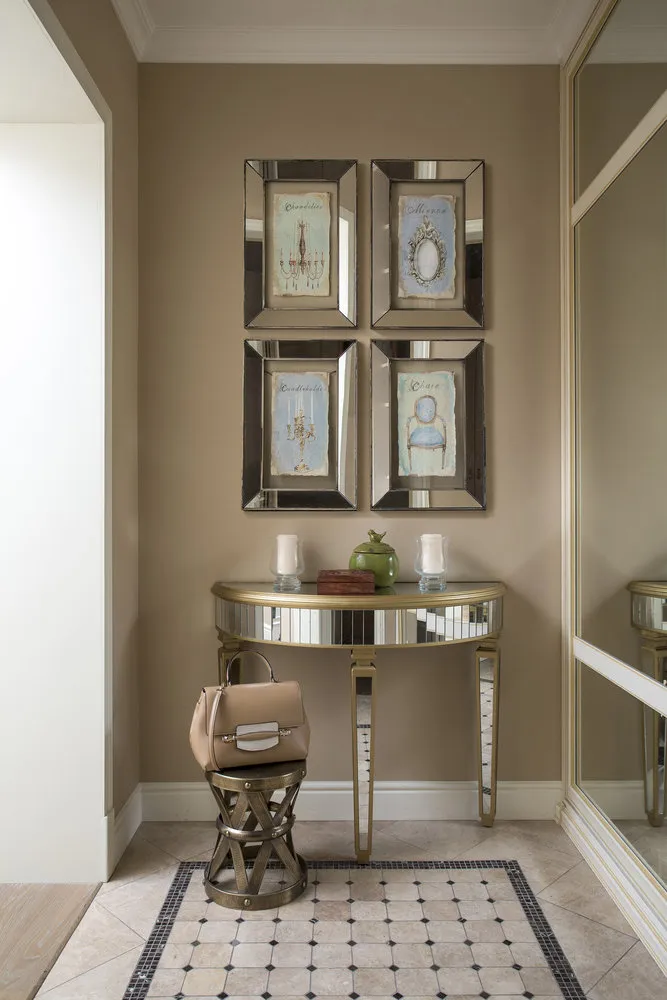
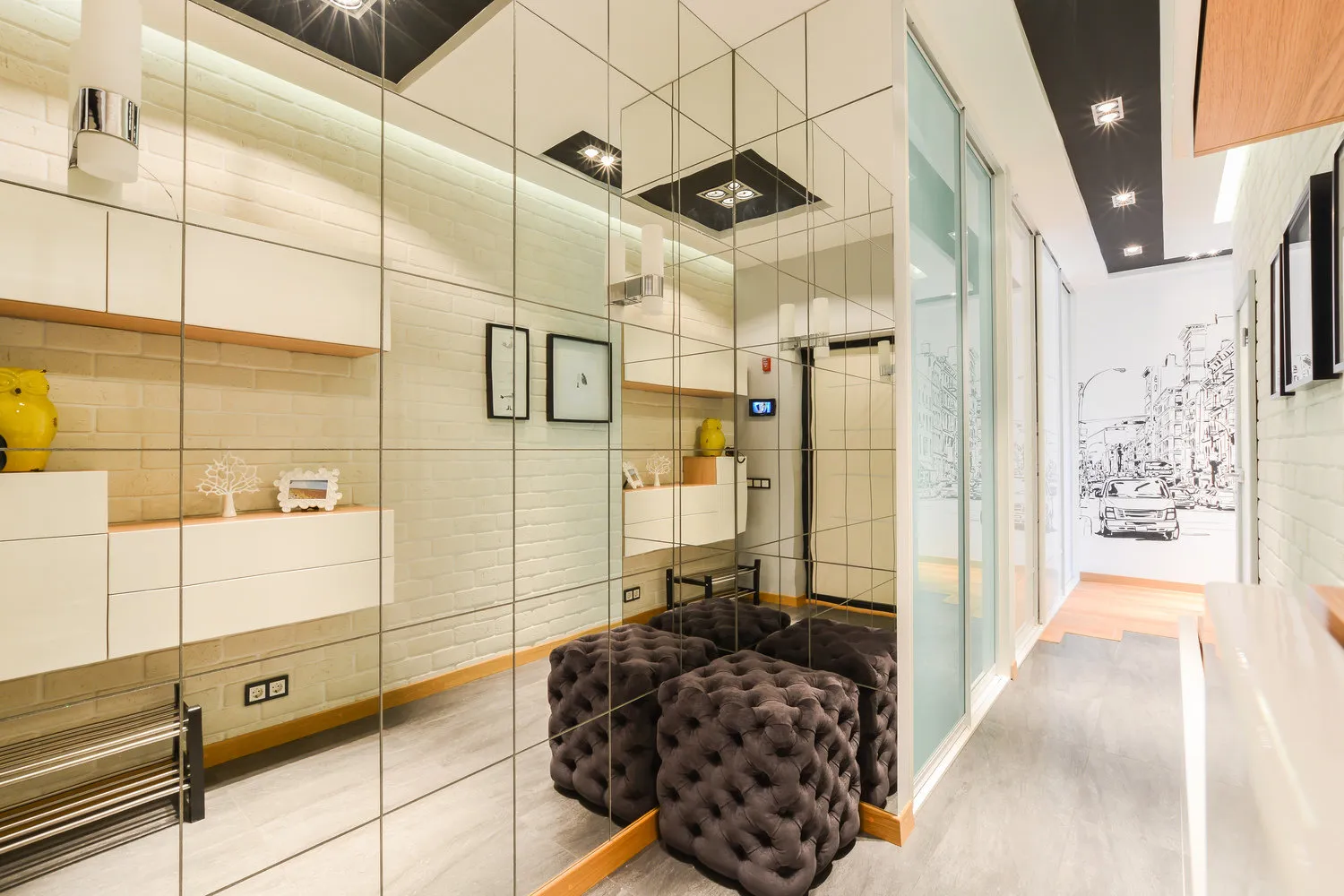
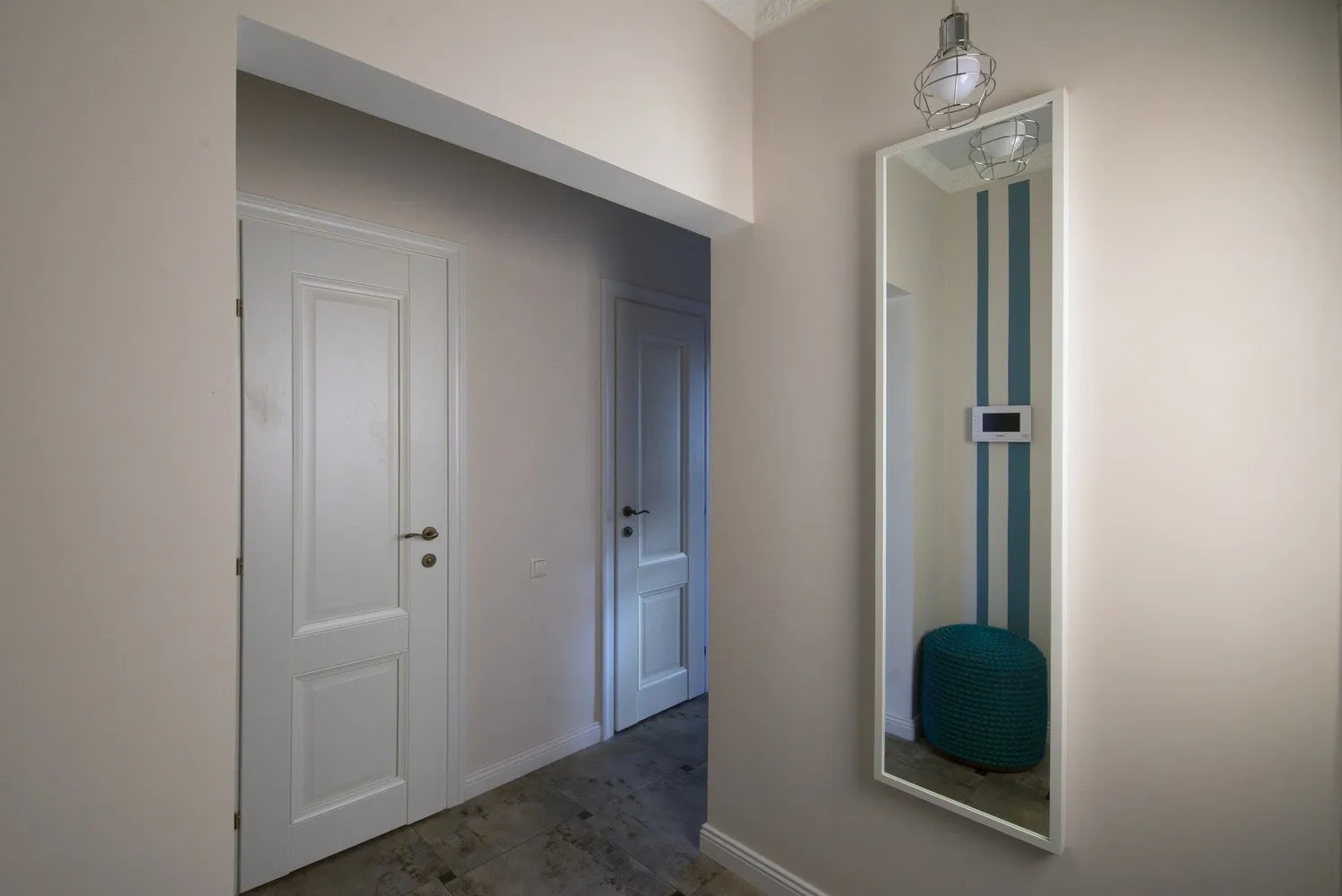
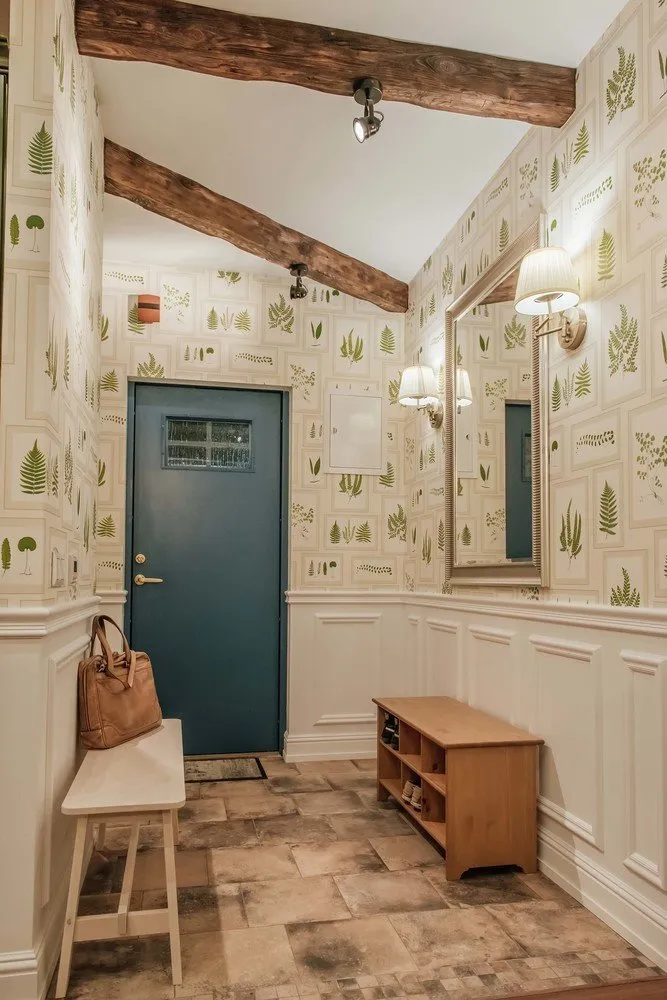
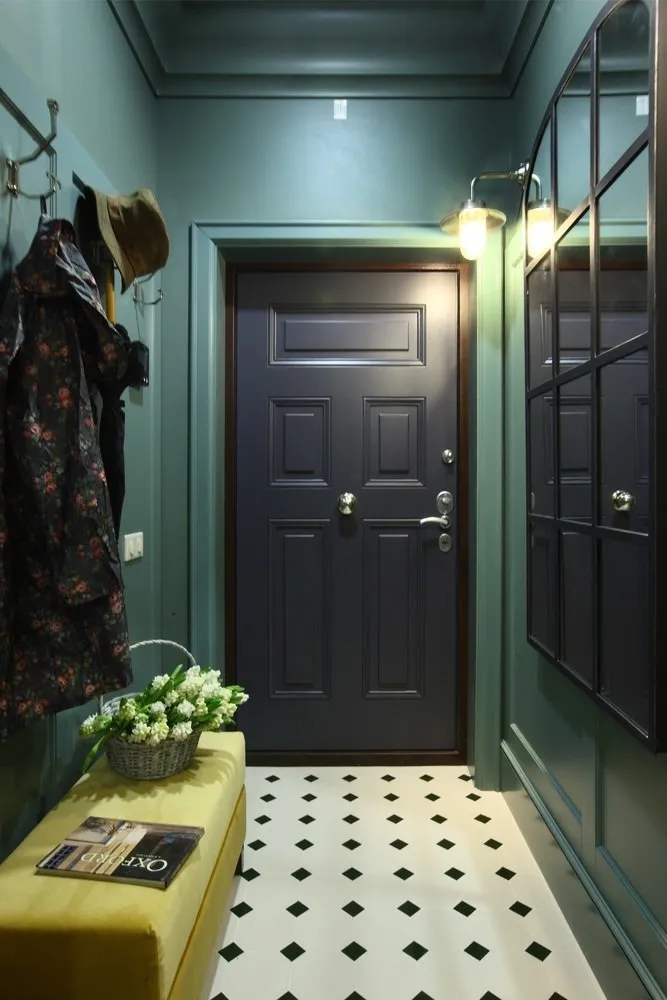
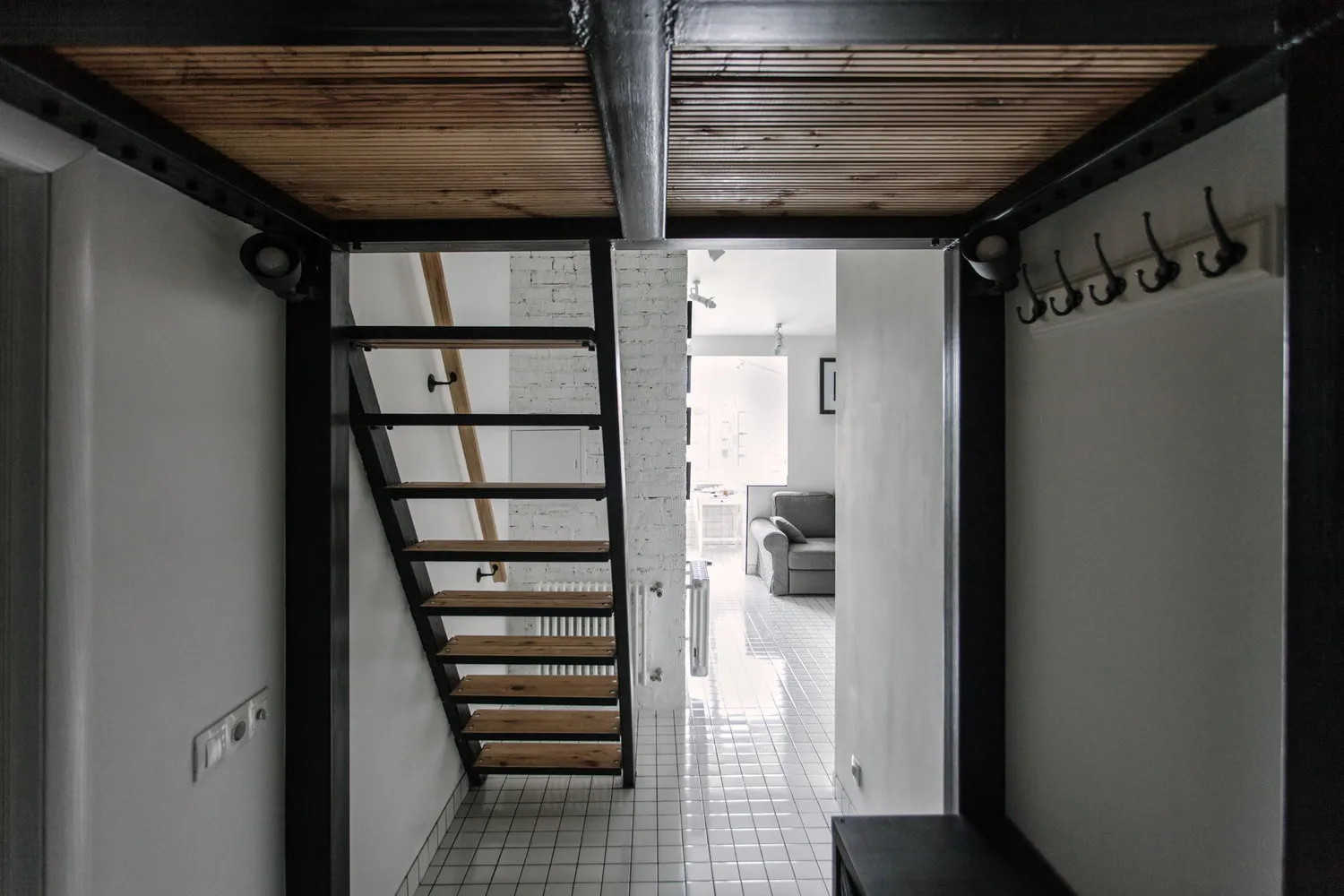
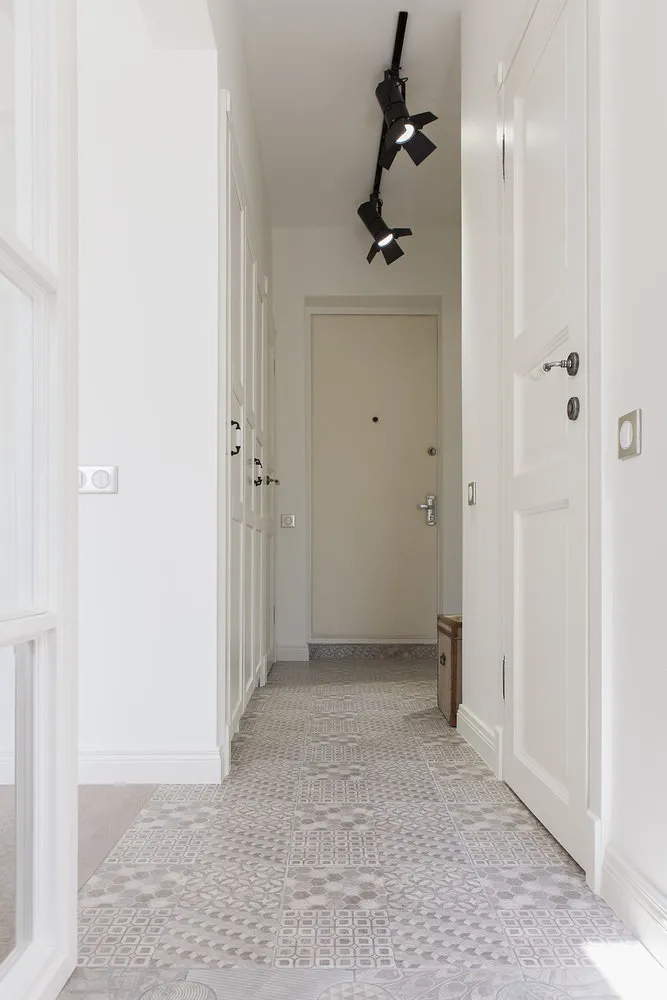

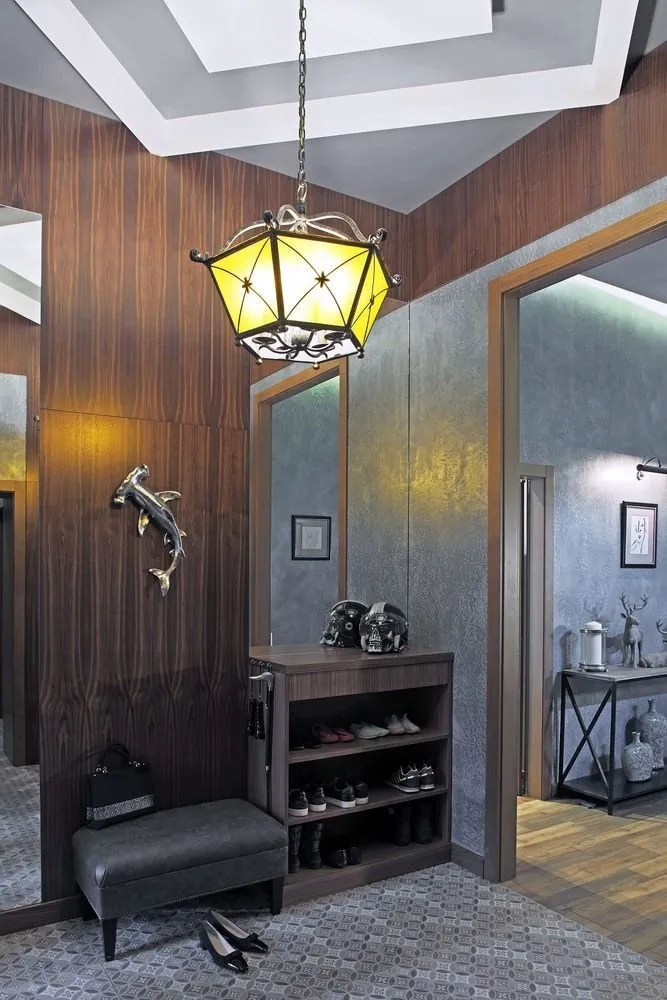
Design: Svetlana Gerasimova
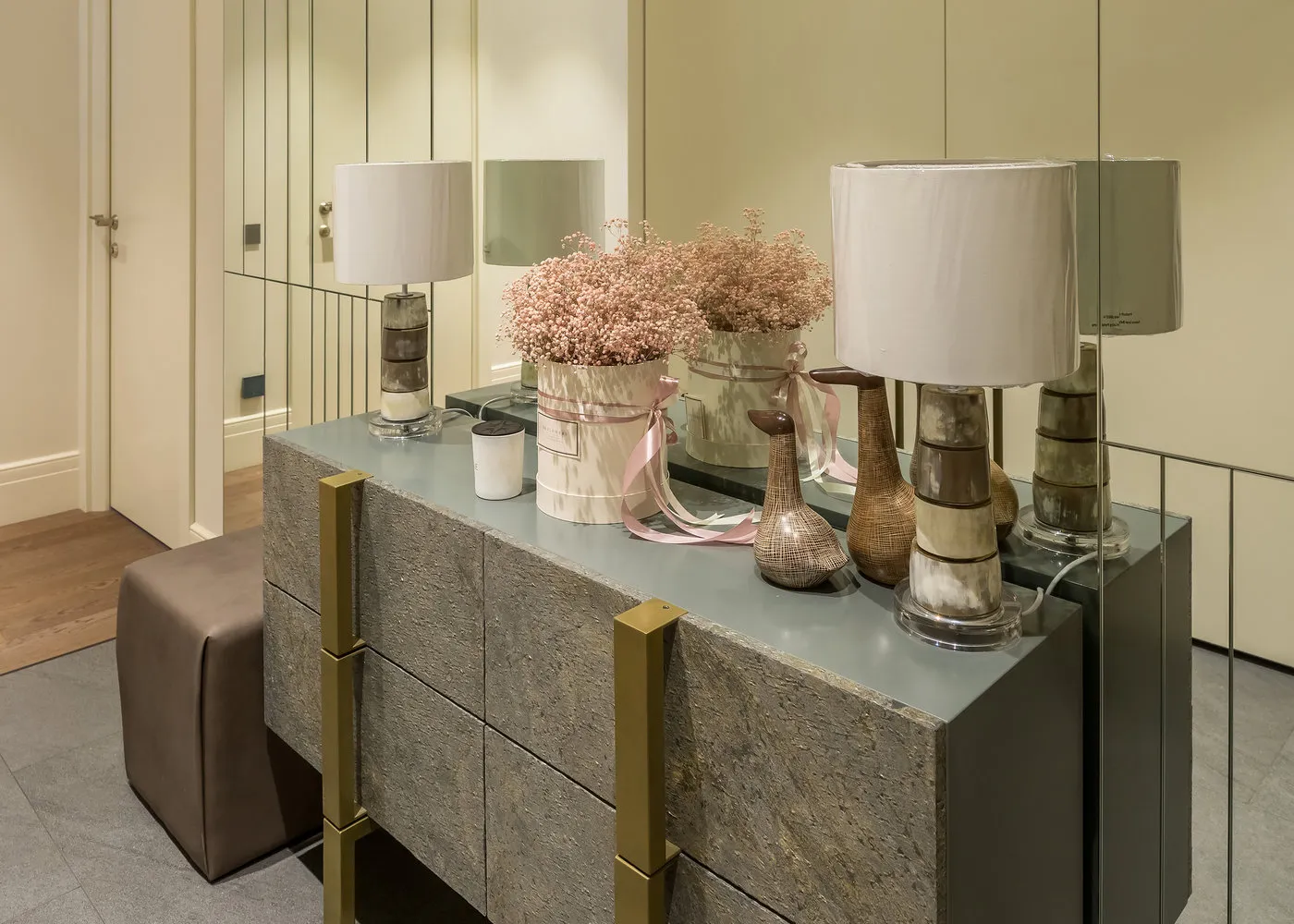
When planning the cladding of a hallway floor zone, owners of country houses and city apartments must approach the material selection process very carefully. They should study the entire range of products available on the domestic construction market in advance to select finishing material that meets all key technical parameters. It should be noted that flooring in such spaces as hallways and lobbies must be extremely resistant to any external impact, have an attractive appearance, and a long service life.
These qualities are possessed by ceramic tile, which in addition to its outstanding properties is an environmentally safe material that does not emit toxic vapors during operation. However, to ensure that the tile laid on the floor in a hallway harmonizes with the overall interior design, property owners should consider designers' recommendations regarding characteristics, colors, and textures during purchase.
The cover design of the Enjoy Home studio project.
More articles:
 11 Design Solutions for a Happy and Comfortable Home
11 Design Solutions for a Happy and Comfortable Home Why was the Housing Complex 'Swan' on Leningradskoe Highway considered the most prestigious house?
Why was the Housing Complex 'Swan' on Leningradskoe Highway considered the most prestigious house? Placing Reading Lights in Interior: Tips + Schemes
Placing Reading Lights in Interior: Tips + Schemes Venetian Plaster in Interior Design: Photos, Characteristics, and Usage Tips
Venetian Plaster in Interior Design: Photos, Characteristics, and Usage Tips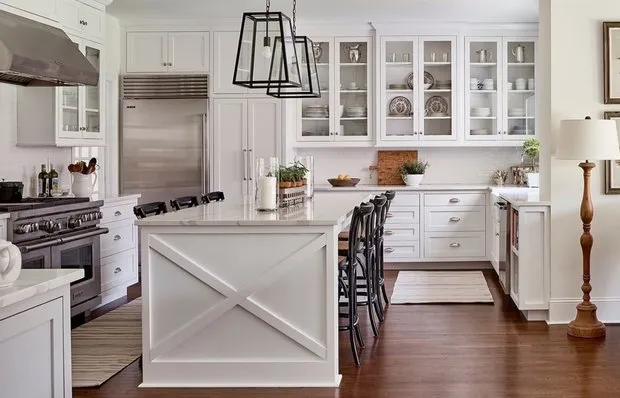 Vintage and Family Relics: Artist's House in America
Vintage and Family Relics: Artist's House in America What to Do If You Bought an Apartment on Mortgage but Must Sell It?
What to Do If You Bought an Apartment on Mortgage but Must Sell It? Entrance and Interior Doors: Overview of Modern Models
Entrance and Interior Doors: Overview of Modern Models Living Room in Gray Tones
Living Room in Gray Tones